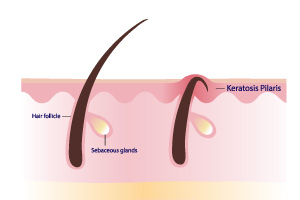

Pulse rate, also called the heart rate, is the number of times the heart beats per minute. The normal pulse rate is between 60 to 100 beats per minute (bpm). Although the normal heart rate is different for different people, certain deviations from the pulse rate normal range may indicate a serious health condition. Read on to know more:
What is the Normal Resting Heart Rate?
Normal resting heart rate or the normal heart rate is the heart beats per minute when the body is at rest. The normal heart rate for adults is between 60 to 100 bpm. However, this changes with age and activity levels. Certain medications also cause the heart rate to deviate from the pulse rate normal range.
How to Calculate Heart Rate?
Nowadays, several smartwatches and health apps on mobile phones can help you check your heart rate. However, heart rate or pulse rate can also be checked manually.
While a pulse can be felt in the wrist, neck, or groin region, behind the knee, near the ankle joint, and on foot, it is easiest to find it on your wrist. The steps involved in calculating pulse rate are:
- Sit down comfortably and stretch out one hand with the palm facing upward.
- Put the index finger and middle finger of your other hand on the inside of your wrist, typically positioning them at the base of your thumb against bony protrubence
- Press lightly to feel the pulse.
Once you begin to feel the pulse, count the number of beats per minute. You can also count the number of beats in 15 seconds and then multiply the count by 4 to get heartbeats per minute.
Normal Resting Heart Rate By Age
Now once you know your pulse rate, the value has to be comprehended correctly. Age is the most common factor that influences resting heart rate.
Normal Resting Heart Rate For Adults
The normal resting heart rate for adults is:
- Ages 18 – 20 years – 81.6 bpm
- Ages 21 – 30 years – 80.2 bpm
- Ages 31 – 40 years – 78.5 bpm
- Ages 41 – 50 years – 75.3 bpm
- Ages 61 – 70 years – 73 bpm
- Ages 71 – 80 years – 74.2 bpm
- Above 80 years – 78.1 bpm
Normal Resting Heart Rate for Kids
The normal resting heart rate for children is different when they are awake and asleep. These are:
The normal resting heart rate for kids when awake is:
- Newborn to 3 months – 85 to 205 bpm
- 3 months to 2 years – 100 to 190 bpm
- 2 years to 10 years – 60 to 140 bpm
- Over 10 years – 60 to 100 bpm
The normal resting heart rate for kids when asleep is:
- Newborn to 3 months – 80 to 160 bpm
- 3 months to 2 years – 75 to 160 bpm
- 2 years to 10 years – 60 to 90 bpm
- Over 10 years – 50 to 90 bpm

Normal Heart Rate When Exercising
The heart rate increases when one is active. It increases even further when exercising. This is because the heart is pumping more oxygen-rich blood to carry out the tasks effectively. When active, the heart rate between 130 to 150 bpm is considered normal.
What is Maximum Heart Rate While Exercising?
Our heart rate increases when we exercise or are actively involved in a physical task. Maximum heart rate is the range you can push your heart to during these moderate-intensity activities. But pushing it up to the maximum level can prove to be too stressful for the heart, leading to serious health risks. Therefore, a target heart rate is set. It is the range that lies between 60% – 80% of the maximum heart rate. Ideally, a person must remain between the target heart rate when exercising.
The maximum heart rate depends upon the age of the person. It is calculated as:
220 bpm – current age
For instance, for a 40-year-old, the maximum heart rate is 220 – 40 = 180 bpm. The target heart rate for the person is 60% of 180 bpm to 80% of 180 bpm = 108 bpm to 144 bpm.
Thus, the heart rate of the 40-year-old must remain between 108 bpm to 144 bpm during moderate-intensity activities.
Other Factors That Affect Normal Pulse Rate
Besides age and activity levels, there are a range of factors that influence heart rate. These are:
- Smoking – Smoking increases the heart rate as it tightens/constricts major arteries. It is also a cause of irregular heart rhythm as the heart has to function harder to pump blood.
- Cardiovascular disease – Plaque build-up in the arteries paves way for cardiovascular disease. This also increases normal heart rate.
- Air temperature – As the air temperature rises, it increases stress on the heart, leading to an increase in heart rate.
- Body Position – Heart rate is position prone. The heart rate is higher in a standing position. But as one lies down, the body temperature drops and the muscles relax. This leads to a slight drop in the heart rate.
- Dehydration – Lack of fluids in the body decreases the blood volume. The heart thus needs to pump harder and the heart rate increases.
- Emotions – Emotions like stress, fear and happiness have a direct impact on autonomic nervous functioning, leading to an increase in heart rate.
- Body size – Short stature and people with smaller bodies (lower BMI) have faster heart rates. On the other hand, obese and overweight people have higher resting heart rates.
- Infections – During fevers and infections the resting heart rate increases as the heart pumps harder to deliver oxygen-rich blood to immune cells, helping combat infection.
- Medications – While some medications speed up heart rate, some others slow down the normal heart rate.
- Anaemia – Lower level of red blood cells in the body will push the heart to pump blood faster to deliver oxygen-rich blood to body parts.
- Hormonal Imbalance – Hormonal imbalance in the body affects heart rate. For instance, hyperthyroidism increases heart rate, while hypothyroidism decreases normal heart rate.

When can Heart Rate Become a Cause of Concern?
A heart rate that is out of the pulse rate normal range of 60 to 100 bpm is considered abnormal. Depending upon the cause, the pulse rate can be fast or slow.
1. Fast Pulse Rate
A fast pulse rate is the one when the heart beats over 100 bpm at rest. Rapid heart rate, also known as tachycardia, can be a result of:
- An underlying health condition
- Anxiety
- High caffeine intake
- Alcohol abuse
- Drug abuse
- Smoking
- Electrolyte imbalance
- Anaemia
- Infection
- Hyperthyroidism
2. Slow Pulse Rate
When the heart rate dips below 60 bpm at rest, it is considered a slow pulse rate. The condition is medically known as bradycardia. It can be a result of:
- A side effect of certain medications
- Electrolyte imbalance
- Obstructive sleep apnoea
- Underlying health condition
- Age
- Cardiovascular ailments
- Hypothyroidism
When to See a Medical Practitioner?
Heart rate may signal a health problem. It is important to see a medical practitioner in the following circumstances:
- Irregular pulse or Arrhythmia
- Fast pulse rate or Tachycardia
- Slow pulse rate or Bradycardia
- Vibrating pulse instead of clear ‘thumping’ of pulse
- Palpitations or uncomfortable feeling of hearing your heartbeat
- Shortness of breath
- Fainting spells
- Light-headedness or dizziness
Conclusion
Heart rate is an important indicator of health. It is an easy health-check mechanism that provides helpful insights into cardiovascular health. Normal resting heart rate for adults ranges between 60 to 100 bpm and increases further upon regular exercise or physical activity. However, unusually high or low heart rate is a cause of concern especially if it is accompanied by other symptoms like dizziness, shortness of breath or palpitations. Also, it is important to seek medical advice if your normal pulse rate check shows signs of arrhythmia (irregular heartbeat), tachycardia (fast pulse rate), or bradycardia (slow pulse rate).




